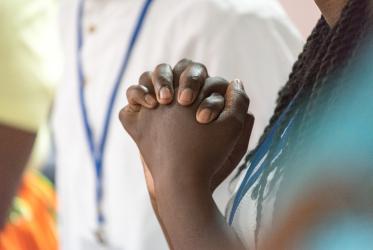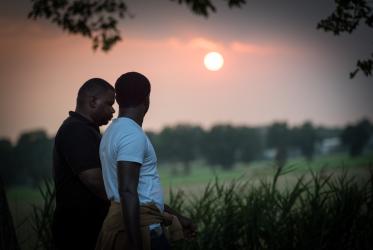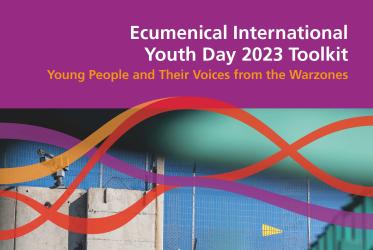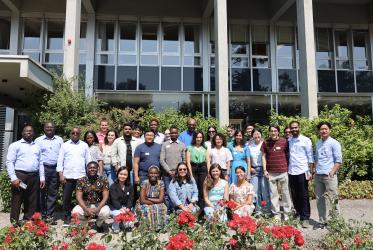In February 2008, five young adults came to Geneva, Switzerland for the World Council of Churches Internship Programme. At the end of their internships in January 2009, each of them started to prepare an ecumenical project based on their interests, passions, concerns and what they had learned during their formative ecumenical experience with the WCC. Each of these projects will be carried out by the interns back in their home contexts inspired by their commitment to the ecumenical vision.
By Antsan'ny Rakotoarisoa, Madagascar
In Madagascar, when we talk about ecumenism, it is stereotyped to the National Council of Churches activities and its members. The NCC includes only the Roman Catholic Church, the Anglican, the Lutheran and the Presbyterian Church. However; many evangelical churches were born during last twenty years. This project aims to share and emphasize the ecumenical movement among all various churches in Madagascar.
There will be a basic website and one conference which demonstrate the union of these diverse associations and churches.
This project has two objectives:
Short term: discussion among youth on ecumenical movement
Long term: setting up a website for the ecumenical movement in the region (Islands in Indian Ocean)
I would start to explain to my association (Association of Anglican Students in Madagascar) the aim of the ecumenical movement as I saw and learnt within the World Council of Churches. Then, I involve my colleagues to formalize some exchanges with other students regardless of their churches. It would be better if we can therefore identify some topics that we will focus on such as economic violence; injustice and the alleviation of poverty.
January to July 2009:Involvement of diverse groups of students at University of Antananarivo, the churches and the main organizations who can subsidize the movement; A first template of a website will be set up for the marketing of the project
September 2009: One week conference - A part from the exchange between Student participants on their faith and denominations, we must orient our activities for 2009-2010. The context of the first activities will be based on socio-economic development.
By Henrik Hansson, Sweden
The podcast landscape in Sweden is if not starving definitely malnourished. Apart from the public service institution Sveriges Radio (Swedish Radio) there are a small number of podcasts available and few of these projects are pursued on a long term basis. Rather, they can be considered projects on ad hoc basis. So on the main Swedish podcast portal the majority of the pieces are either from Sveriges Radio or foreign podcasts. On the Swedish podcasters association's website every single podcast they consider to be "recommendable" is in a foreign language (English). When it comes to podcasts talking about religion and its role in society there are possibly even fewer.
The objectives of this project are two-fold: one is to spur the ecumenical debate within churches in the country today, to highlight differences and outline commonalities and cooperation.
The second objective is to elucidate and explore churches' role in society today, especially with regard to their relation with people of other faith and cultural background. In both series a special, but not exclusive, focus will be on young people.
More general overall goals are to increase churches' use of non traditional media and inspire them to reflect on its role in society.
The project will contain the following elements: to produce at least three podcasts on contemporary ecumenism in Sweden and three podcasts on inter-religious dialogue and cooperation in Sweden. The language will be Swedish.
The two series will have partly different target audiences. The series approaching ecumenism aims to reach people who are likely to already be involved in the church in some capacity or function. They do not necessarily have theological formation but are interested in extended cooperation between churches. The series with interfaith angle has potentially a broader audience consisting of people interested in intercultural and interfaith issues in general, but also people whose focus is on what the church is doing in relation to other religions.
Underlying media background: Sweden is largely a secular (though still predominantly culturally Christian) country with a minority, a growing one, coming from a non-Scandinavian and sometimes non-Christian background. Most people have only occasional contact with a church, primarily in connection with weddings, baptisms, funerals and similar ceremonies. How ever, since 9/11 there has been a significant increase of interest, similar to the rest of the western world, in religion with a certain focus on Islam and it's relation with Christianity. The last few years a debate about churches' role in society and how religious organizations in general should be viewed has erupted.
By Hotavia Gingerlei Porter, American Samoa
There is a sense of dislocation/disconnection from the issue of peace for many people in American Samoa. Perhaps because of its nonexistent platform for peace initiatives or maybe because of the strong cultural foundation promoting peace and nonviolence (directly and indirectly) through family togetherness and community building efforts peace becomes intangible.
This project is a continuation of the Pacific Stories of Peace Art Competition during the DOV Annual Pacific focus in 2008. The Messengers of Peace children's art project introduces peace by asking children and young people their visions of a peaceful American Samoa - "what makes American Samoa a peaceful island?" Yes, we have our issues and struggles, but the project aims to highlight the peace that exists and how it has built American Samoa over many years (from health to cultural, etc.) The project recognizes art as an important language of childhood, one that offers voices to children and youth to speak to each other to the community and importantly, to have their views taken seriously.
The objectives of the Messengers of Peace are as follows:
-
Highlight the peacefulness of American Samoa through art-inspired projects
-
Produce a moving exhibit for the artwork
-
Contribute the project as a resource' to the International Ecumenical Peace Convocation
-
Long term: Art exchange with another Pacific Island
-
Calendar for artwork
The Messengers of Peace will invite children and youth to submit and participate in art-inspired projects. Transcending the limitations of culture, geographic isolation, and politics, projects create important learning opportunities, foster communications and exchanges and building communities of peace and nonviolence. The activities will be promoted through Sunday School and youth events and also on the calendar of the Congregational Christian Church of American Samoa. Communications with the National Council of Churches has been established but have yet to inform them of the topic for the project and specific timeframe. I will meet with potential exhibit sites - the main location of the project will be in American Samoa on Tutuila Island. My youth group will also serve as coordinators of the project and will assist with the creation and moving of the art exhibit.
The Messengers of Peace will bring the artwork of children and youth of American Samoa to the community at the local, regional and international level as a way to include the ideas, views, concerns, hopes and dreams of children and youth in the issues of violence and peace. The project also hopes to contribute to the IEPC through it artwork.





